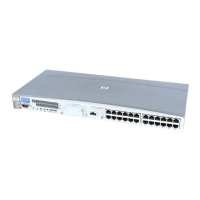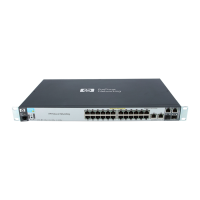SPI Programming Considerations
NonStop Pathway/iTS Management Programming Manual—426749-002
3-27
Receiving and Decoding Response Messages
Receiving and Decoding Response Messages
The following subsections summarize the steps your application must take to receive
and decode SPI command responses. These summaries are followed by subsystem-
specific programming considerations for the Pathway subsystem.
For more information on receiving and decoding SPI commands and responses, see
the SPI Programming Manual.
Summary of Steps
The following is a summary of the steps your application must take to receive and
decode a response message:
1. Declare a buffer of appropriate size.
2. Read the response message by using the mechanism appropriate to your
programming language (for example, a WRITEREAD call in TAL).
3. Call SSGET or SSGETTKN to retrieve the values of header tokens and other
tokens from the buffer.
4. On encountering the data-list token (ZSPI-TKN-DATALIST) or the error-list token
(ZSPI-TKN-ERRLIST), make another call to SSGET or SSGETTKN to retrieve the
tokens inside the data list, including the error list if one exists.
5. On encountering a context token (ZSPI-TKN-CONTEXT), finish reading the other
tokens in the buffer. Then, optionally, use SSMOVE or SSMOVETKN to copy the
context token into the command buffer, and resend the command to get the next
message in the response.
The Pathway subsystem can return an empty response if an application returns a
ZSPI-TKN-CONTEXT token and there are no more responses to be returned. The
return token ZSPI-TKN-RETCODE in the returned response always has the value
ZPWY-ERR-PM-EOF.
6. Take action appropriate to the information in the response.
Considerations
The response buffer always contains the return token, ZSPI-TKN-RETCODE. The
value of the ZSPI-TKN-RETCODE token is either zero (to indicate that the command is
successful), or it is a nonzero error number (to indicate that the command was not
performed). The command can contain error lists in either case.
Although the Pathway subsystem generates responses for all commands, responses
from some commands (such as INFO TCP and STATUS TCP) must be obtained from
fields within an extensible structured token. For example, the extensible structured
token in the INFO TCP or STATUS TCP command contains all of the information about
TCPs that is available from the PATHMON process. To see a field within an extensible

